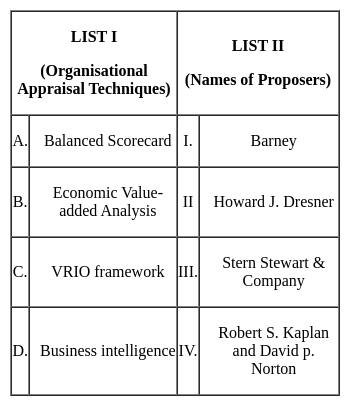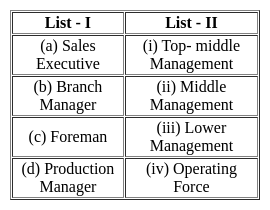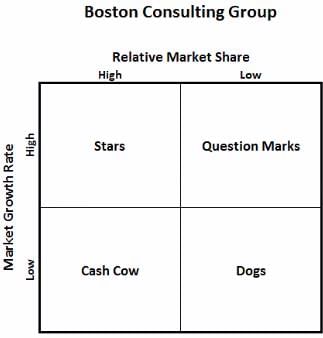APSET Paper 2 Mock Test - 4 (Commerce) - AP TET MCQ
30 Questions MCQ Test APSET Mock Test Series 2026 - APSET Paper 2 Mock Test - 4 (Commerce)
According to BCG matrix, for which one of the following positions of SBU the firm should decide to curtail losses by divesting?
Under which of the following conditions can a proposal be revoked according to the Indian Contract Act 1872?
A. By the communication of notice of revocation by the proposer to the other party
B. By the failure of the acceptor to fulfil a condition of proposal
C. By the death or insanity of the proposer
D. By the lapse of the time prescribed
E. By notice of revocation after the acceptance is communicated.
Three pillars of the Asia- Pacific Economic Cooperation (APEC) are:
- Trade and investment liberalisation
- Business facilitation
- Economic and technical cooperation
- Military cooperation
Big multinational pharmaceutical firms try to exercise influence over the policy decisions made by government departments and regulatory agencies. Which of the following does not reflect how the companies try to exercise their influence?
The managerial function of organising involves:
Study the following information:
Covariance between X and Y series = -17.8
Standard deviation of X series = 6.6
Standard deviation of Y series = 4.2
No. of pairs of observation = 20
The coefficient of correlation is
Surcharge is levied when the total income exceeds for domestic corporation.
If the median is 25 and the mode is 20, then the arithmetic mean will be
Which of the following referred to as 'paper taxes'?
I. Wealth tax
II. Gift tax
As per Section ___________ of the Companies Act, a certain class of companies are required to appoint an internal auditor for conducting internal audit.
Sequence the following steps in the process of estimating demand equation using regression analysis.
A. Obtaining data on each variable or its proxy
B. Estimating slope coefficients
C. Model specifications
D. Deciding on the functional form of the demand equation
E. Evaluation of regression results
Choose the correct answer from the options given below
Which of the following is not a part of PEST?
Find the incorrect statement on the basis of the given passage.
Cost accounting information can be used for:
Identify which is not a diversifiable risk factor
Match List I with List II

Choose the correct answer from the options given below:
Consider the following statements:
1. In the case of marine insurance, the insurable interest must exist at the time of loss.
2. In the case of fire insurance, the insurable interest should exist at the time of contract and also at the time of loss.
Which of the above statements is/are correct?
Which of the statement (s) is/are true?
Statement I: As per Section 125 of the Indian Contract Act, a contract of indemnity is a contract by which one party promises to save the other party from loss caused to him.
Statement II: The person who promises to indemnify or make good the loss is called the indemnity holder and the person whose loss is made is called indemnifier.
Arrange the following activities in the process of accounting
A. Journalising the transaction in the ledger accounts
B. Recording the business transaction in the books of entry
C. Preparation of Annual Financial statements
D. Preparation of the Trial Balance
E. Deriving meaningful inferences for business decisions
Choose the correct answer from the options given below:
Identify the indirect taxes from the given option.
The difference between the point estimate and the true value of population parameter being estimated is known as
(a) Sampling error
(b) Estimation error
(c) Probable error
(d) Standard error
Choose the correct option from the options given below:
Match the items of List - II with List - I and choose the correct code :

|
60 tests
|

















